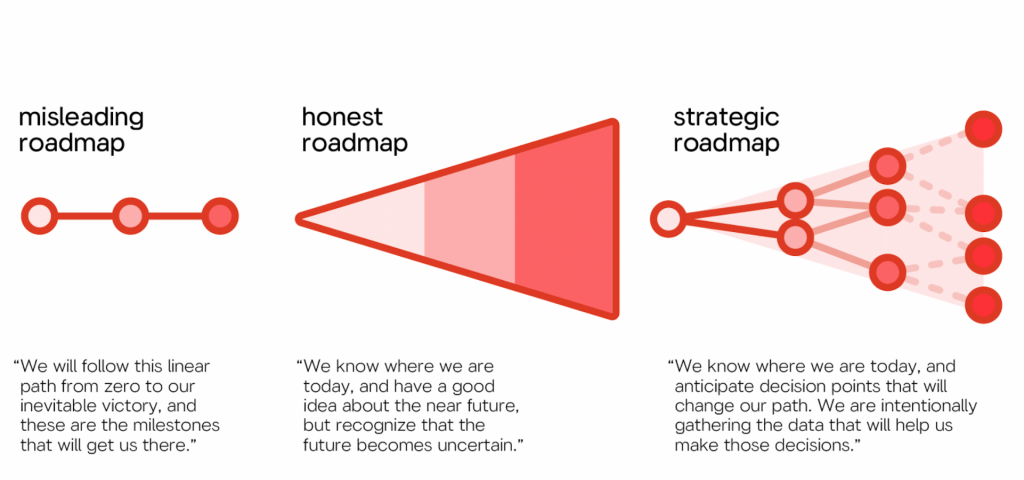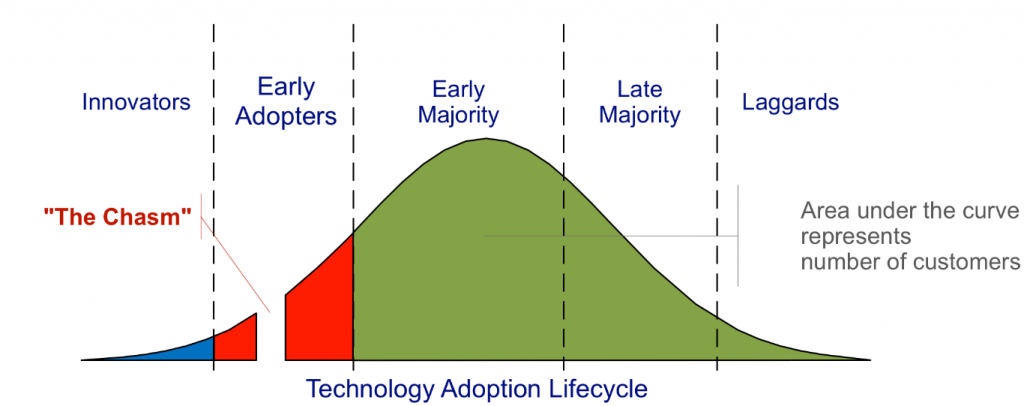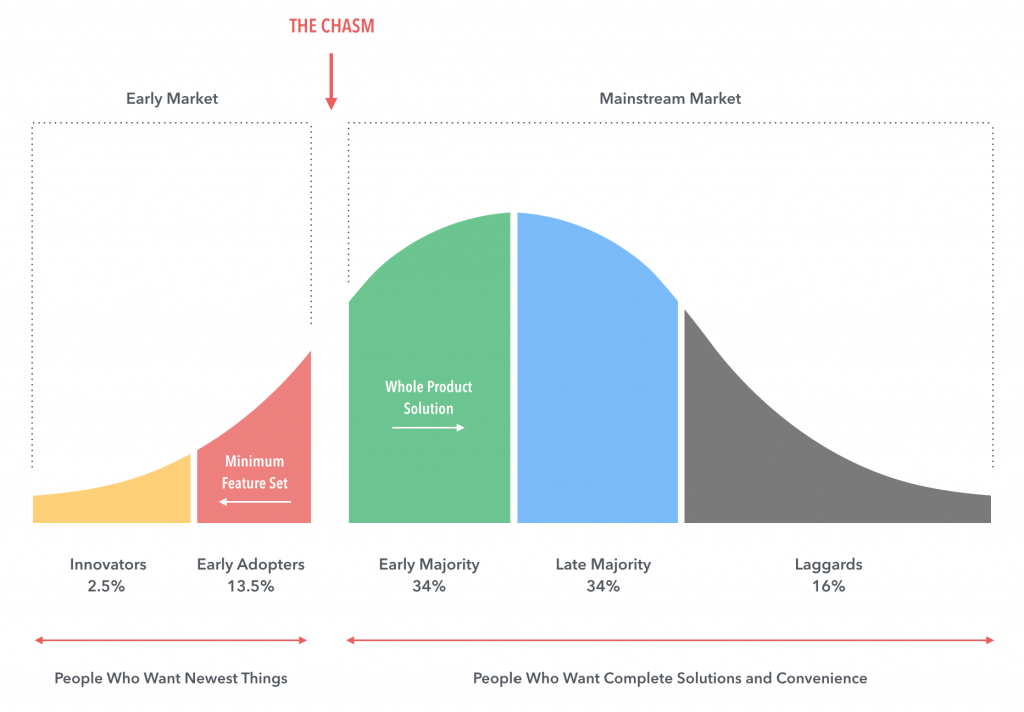
The meaning of skate to where the puck is going, not where it as been
Walter Gretzky is credited with the quote: “Go to where the puck is going, not where it has been.” Walter used socratic questioning to teach his son, Wayne, hockey strategy.
Here’s the full context from Wayne’s perspective:
Him: “Where do you skate?”
Me: “To where the puck is going, not where it’s been.”
Him: “Where’s the last place a guy looks before he passes it?”
Me: “The guy he’s passing to.”
Him: “Which means…”
Me: “Get over there and intercept it.”
Him: “If you get cut off, what are you gonna do?”
Me: “Peel.”
Him: “Which way?”
Me: “Away from the guy, not towards him.”
(Gretzy, Reilly, Gretzky: An Autobiography p. 88)
Puck On
To win a game of ice hockey, your team has put a hard rubber disk into a mesh enclosure more times than the opposing team. The game is played on ice. Each team usually has six players simultaneously contesting the position of the puck. One of those players, the goal tender (Canadian: goalie), often stays close to the mesh enclosure, called the net. There are variations in configuration, duration, rules, and conduct depending on league, country, and continent. Professional hockey, as played in Canada and the United States, is significantly modified for an American audience. It is a popular version ice hockey.
In Canada, around 100,000 women and 1.1 million men practice ice hockey [1].
The combination of the popularity of the Gretzky family and ice hockey causes the saying to be a Canadian business meme.
But what do people mean when they say it?
The Meaning of the Meme
The meme is often verbally shortened to ‘skate where the puck is going’. It is most often deployed as an exclamation point the end of a bold predictive declaration, or by another participant to signal support for a bold predictive declaration. It can be used to shut down a conversation.
It can mean:
- “_______ is going to happen, we need to act now to be in the best position in the future.”
- “I agree with ________, because they have demonstrated strong foresight.”
- “I have declared an end of conversation.”
It can sometimes, though rarely, mean:
- “I invite you to discuss what you believe will happen in the future.”
Underlying Assumptions
There’s a lot to be desired about the meme.
So, if you’re up for it, let’s see if we can use the meme to build on the way we think about business?
The meme may contain the following assumptions:
- Business is a game like hockey;
- The game has rules;
- There are referees;
- The playing surface is flat;
- The goal is to gain possession of the puck.
Rarely is it assumed that:
- The opponent has possession of the puck;
- The opponent must pass the puck;
- The opponent is signalling their intent to pass the puck with their eyes.
For Pucks Sake
Is business a game like hockey?
There are game like qualities to business. It is often a team sport, though it’s starting to take on individual qualities. The participants themselves generate an exhaust from their engagement that creates value unto itself. There are elements of winner take all. Many markets are effectively dominated by just two teams. And yet, whenever that happens, they sort of pretend to compete. Just enough to fool the referees, but never enough to create any real consequences. They pretend to play and we pretend to cheer.
Does business have rules?
Business has rule-like qualities, just like hockey, doesn’t it?
One of my most vivid childhood memories was at the Moncton Coliseum, when a member of the Moncton Golden Flames entered into a fist fight with a member of the Fredericton Hawks (I think). The Flame hit the Hawk a good three times right in the jaw. The Hawk fell to the ice. A referee skated over. The Flame punched a referee square in the face, knocking him back, spiralling. Then the Flame kicked the Hawk while he was down. I remember focusing on the leading blade of his skate. Then he began stomping in a downward motion on him. Multiple Flames tackled him. The contrast of the red blood on the white ice is imprinted in my mind. I was 6.
Business is a lot like hockey. Sure, there are rules. There’s also variance from those rules. We often assume that people are rational and strategic. But is that a good assumption?
What if rules aren’t always followed?
Blood.
Are there referees?
There are referees in business. The Canadian state has a vested interest in not only ensuring the perception fairness, but a strategic interest in ensuring actual fairness. To be sustainably competitive as an export society, the system that produces and procures business talent must be legitimately competitive, and solidly rooted in ground truth. The market must be able to select winners and losers. Deviations from that stance risks productivity decline, social capital flight, and ultimately, corrodes the entrepreneurial cultural bedrock. People don’t play crooked games for very long. They catch on. Then they find another game.
There are very good referees. They’re human, and their judgement is subject to variance. So long as they legitimately attempt to have fair recall and precision, they enjoy the benefit of the doubt and the game continues.
If the referees behaviour contain a systemic bias, and if the cause of that bias is because of malevolent influence, then bad things happen. We sure hope the referees aren’t biased.
Is the playing surface flat?
Most hockey in Canada is played in local community centres, built, managed, and maintained by locals. The vast majority of ice surfaces them are flat and fantastic.
The vast majority of the 1.18 million businesses in Canada compete on flat surfaces.
Many new businesses do not compete in arenas. They just start competing because somebody notices that pond ice is finally thick enough to play on. Canada has 31,752 named lakes. There are no referees because the state hasn’t become aware that there’s a game going on. Lake ice isn’t expertly groomed by a retired veteran driving a Zamboni because he likes helping out his community. Lake ice has natural defects. Unevenness here. A strange crack over there. Ice can freeze funny.
If you’re playing for the first time, skating to where the puck is going takes on a significantly different dimension. The puck may have received an intentional force, but it may end up going where nature was completely indifferent to.
The water froze the way it froze. The variance of the surface wasn’t intentional. It just is what it is.
People are sometimes intentional.
Remember the goalie? The goalie will often use their blades to distress the ice surface in front of their net. They do this to increase the coefficient of friction. They deliberately change the probability surface in front of their net in an effort to change the future.
Is the goal to gain possession of the puck?
Well no.
The goal is to win the game by putting the puck in the oppositions’ net more times than they put it into your own. Possession of the puck enables the opportunity to do that while denying the opposition the opportunity to score points against you.
Is possession of the puck necessary in business? Doesn’t that depend on what the puck is?
The puck typically symbolizes client or initiative. It sometimes means framing. It can generalize down to the concept of opportunity.
There’s an assumption that the situation is binary. As though there is only one puck on the ice at any given time. That seems like a strange assumption to make about business, doesn’t?
If there is only one puck, one opportunity at a time, if business is based on the serial possession of opportunity, then sole possession is what you want. You want the opportunity to take a shot on the goal. But that opportunity isn’t the goal.
The rare assumptions
A lot of people assume that the puck is free because of the way the meme is clipped by the words ‘where the puck has been’. The notion that the competitor is in possession of the opportunity is rarely unpacked.
So let’s unpack it.
What can be done if the competitor is in possession of the opportunity?
A few things can be done that are well within the rules. Assuming there are rules and there is a referee to correct deviations from the social contract. The first is that you skate over to where the opponent is going and push them into the side of the rink – into the boards. One can skate on over and try to take it from them. And, you can wait for them to pass the puck.
It’s also well within to rules to just skate on over and punch them. You can fight over the puck.
Outside the rules, you can club your opponent with the stick, or you can hold them back by hooking them with your stick.
But some of the time, you wait for a pass.
Must the competitor pass the puck?
Sometimes. If one player is way better than all the others on their team, and they retain possession of the puck all the time (Canadian: ragging the puck), then that player attracts a large amount of attention. The counter-strategy to ragging the puck is to cluster the ragger. Eventually, the competitor has to pass the puck, or take a shot.
Walter asked: “Where’s the last place a guy looks before he passes it?”
Do we signal our intent with our eyes?
The puck isn’t a self-propelling entity. It can’t create its own force. It’s going to go in the general direction the opponent is going to send it, as moderated by the nature of the ice surface and their competence to direct the puck.
If you want to gain possession of the opportunity, all you have to do is figure out what your opponent is thinking, and then skate to where you believe the opponent is going to attempt to direct it. In hockey, you look at eyes. I’m a bit at variance with the idea that it’s always the last place they looked. So often it’s about where the team expects itself to be at the point of passing, and where the opponent has looked in the past.
Planning, the preparation of the mind, matters.
This set of assumptions around control, rationality, and planning are rightfully contested in the management science literature. Who thinks about the competition? [2]
Do Canadian executive teams engage in socratic questioning with one another? How often do they engage in constructing strategic roadmaps? Do they speak of when to intercept? When to peel? [3] Or are such activities exceptional?

What The Puck
Now that a beloved Canadian business meme has been joylessly disassembled, let’s mutate it slightly. Let’s focus on the puck.
What if we modified the meaning of the Puck ever so slightly? What if, instead of the meme getting to shut down conversation, it could be used to invite conversation?
Just ask what’s the puck? Say it quickly enough and it sounds like what the puck. Fun?
What if the puck is a market segment?
Moore defined a market segment as a set of actual or potential customers for a given set of products or services, who have a common set of needs or wants, and who refer to each other when making purchasing decisions [4].
Moore introduced very specific way of segmenting customers. It’s depicted below.

This is the diagram that people wanted in the nineties. Part of this diagram is that looks like a normal curve, and hey, people like things that look familiar. It depicts a single dimension market segmentation. It implies time is passing along the X-axis, and there’s an inevitability to how many customers are up for grabs along the Y-axis.
Here’s a more detailed view with Moore’s original percentages assigned:

An example of a market segment may be Florist business owners in Canada (n=2519) who because of the scope and size of their operations have significant logistical problems that are limiting their gross profit (n=629), who want the newest things and would take the risk on a new product (n=15) or something they hear is pretty good and improving (n=84). The Early Majority (n=213), who would want a more complete solution, would need to hear very good things from 43 to 75 of the 99. It could be a tough chasm to cross. [5]
So let’s look at the puck – Florist Innovators with logistical wants and needs (n=15). The probably know each other. They’re probably all members of the Canadian Academy of Floral Art (CAFA). It checks all the boxes. So where is that puck going?
Is there any ice? Is there even a surface for a puck to be played with?
For there to be ice, a technological breakthrough might need to generate at least $1,500,000 worth of value for those 15 customers. That’s value that accrues to them. You may be recognized only for a portion of it. That may be in the range of possibility. It may not be. Is the puck going to the bottom of the lake? Do you want to follow the puck there? Can it be put into a net?
Maybe somebody notices that a pond has frozen over. Maybe they decide to play for the next puck, and go for the early adopter puck? That’s a play for the 84.
Games that are worth playing attract competing teams. And what then? What are the guiding heuristics of how that game is played? Do you let them get ahold of the puck? Or are they coming to the lake with their own?
Where do the pucks go over multiple games? Does the bloodsport of technological innovation in the Canadian florist industry attract an audience? What happens to the pucks as the technology evolves? What happens when referee’s decide that it’s worth their time to see what’s happening on that far flung frozen lake? What happens when the Detroit Red Wings show up?
It becomes easier to talk about where the puck is going when you’re clear on what the puck is, and you are deliberately intentional about what it means to have of puck. Great. You got the puck.
Now what?
Puck Off
There are many problems with analogizing business with hockey. Instead of dismissing it out of hand, we played with it. We’ve had our fun.
A superior, and perhaps far more Canadian analogy, would be to analogize business with golf. After all, golf is practiced by 1.1 million men and 355,000 women [1]. That’s on par with hockey amongst men, and 3.5x more women.
If you’re a founder, co-founder, entrepreneur or CEO, you may have the insight that business, like golf, is more of a game you’re playing with your self. After all, it’s inevitable that you’re going to get some ball into that hole, it’s just a question of how many strokes it’s going to take to get there. You may sink a few balls in the water. Maybe you’ll fish them out. You probably won’t. How you deal with your own reaction to all of those events have a direct causal effect on what happens next.
Golf combines the human elements of intentional design with the kind of variance that nature provides. A designer intentionally created the shape of the course and the placement of the hole. The greenskeeper takes care of the surface. Nature provides the variance with wind, rain, sun, and precipitation.
Maybe you’re competing with others in a direct way. Maybe people cheat themselves by writing down lies they’re telling themselves? Maybe the referees aren’t looking?
There’s a long game and a short game. A leader understands the distinction.
There’s a conventional way to play holes, in the sequence suggested by the designer and tradition. But there are other ways too. Who says you play that way?
The best part of the analogy is that each market segment has a natural hole it wants to be in. The ball wants to be in that hole just as market segments want what they want. Both games are about guiding something, a ball or market segments, to where they want to go. If you can do it in less time, with fewer strokes, you may end up winning. Whatever your personal definition of winning is. It depends on your comparative competitive set.
And don’t you, yourself, decide what that is? Don’t you make your own competitive set?
Best of all – there are plenty of balls and plenty of holes for anybody that wants to play. Granted, the chasm may be a sand trap, so watch out. Do yourself a favour and bring more than one ball.
Most of the leaders I know just have a love for the game – and it isn’t about competitors at all.
Wouldn’t a Canadian business meme about golf be superior?
Conclusion
The meaning and use of the Canadian business meme “Skate to where the puck is going, not where it has been.” varies by context and intent. There are several hidden assumptions about the meme. And there was a good hearted attempt there to focus on the interplay of prospection (thinking about the future), the customer, and the competitor. By thoroughly unpacking the meme and mutating it just a little bit, perhaps we’d be better off.
There are better business memes left to be discovered in golf. All that’s really needed is a breakout Canadian player, an autobiography, and a prominent placement of a quote in a Canadian airline magazine – possibly EnRoute or re:Porter.
So, if you’re some young Canadian athlete working hard to hone your skills, how about this as some additional inspiration?
Just think of the memes.
[1] Canadian Heritage (2013) Sport Participation 2010. pp. 34
[2] Goldfarb, Avi, and Mo Xiao. (2009) “Who thinks about the competition?.” Managerial ability.
[3] Peel, in the context of the quote, means to go in a different direction.
[4] Moore, G. A. (1991). Crossing the chasm: Marketing and selling technology products to mainstream customers. New York, N.Y.: HarperBusiness.
[5] Statistics Canada. Based on figures from 2017. 75th percentile threshold of Gross Revenue at the $355,000 threshold. The Covid-19 Pandemic has likely shrunken all market segments.
